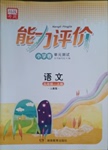题目内容
The teacher simplified the reading materials, ______ it easy for the students to read.
A. making B. having made C. to make D. made
练习册系列答案
 能力评价系列答案
能力评价系列答案 唐印文化课时测评系列答案
唐印文化课时测评系列答案 导学与测试系列答案
导学与测试系列答案
相关题目
题目内容
The teacher simplified the reading materials, ______ it easy for the students to read.
A. making B. having made C. to make D. made
 能力评价系列答案
能力评价系列答案 唐印文化课时测评系列答案
唐印文化课时测评系列答案 导学与测试系列答案
导学与测试系列答案